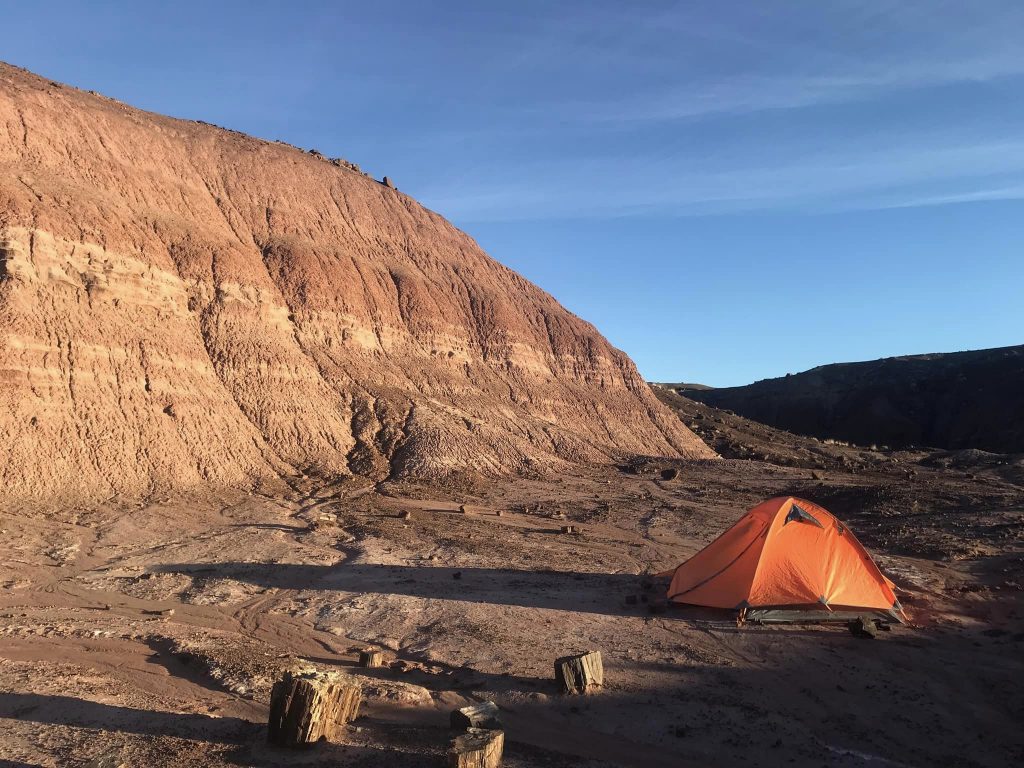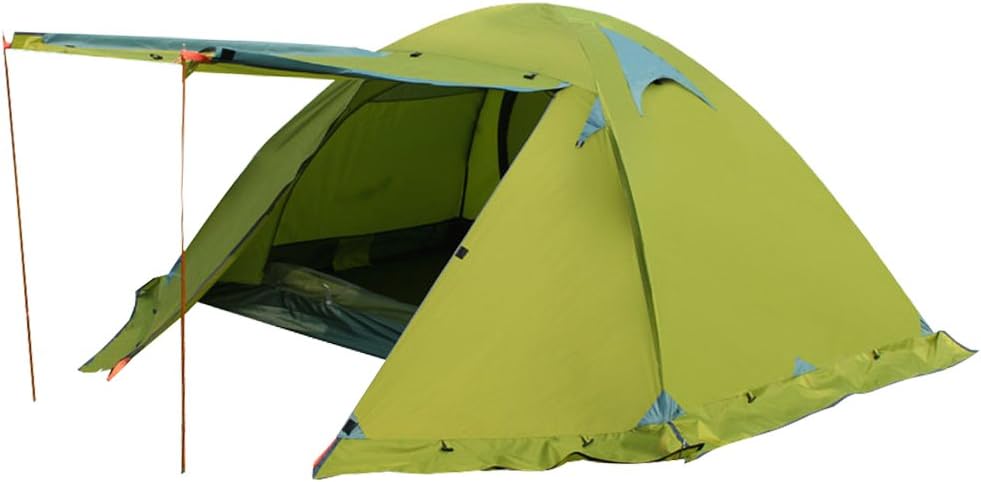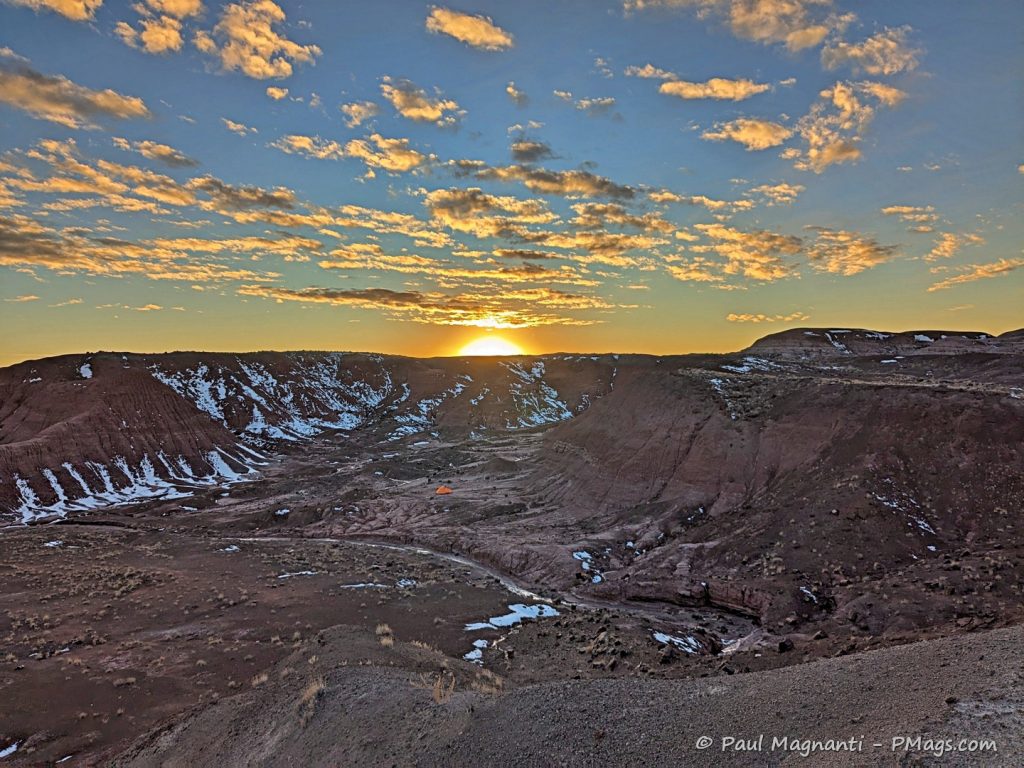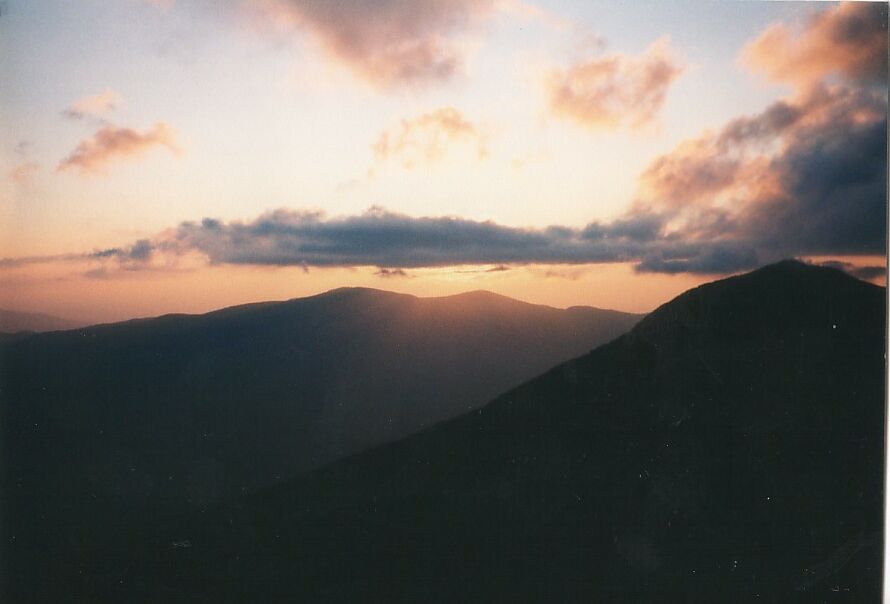Back in 2014, I had visions of ski tour-based backpacking with my partner.
I knew we would not do much of this type of backpacking, but I figured an outing or two per Colorado Rockies winter would not be out of the question. Carrying it via pulk would somewhat mitigate the weight penalty.
For various reasons, that idea did not pan out. Instead, I did a fair amount of solo overnight ski tours with my Black Diamond Firstlight, which I bought at the end of the season at a steep discount. It ended up working well for solo use.

However, the budget tent I bought for those imagined ski tours was used for cold-weather car camping instead. The mainly nylon fabric with some mesh on top and the steep walls did shed snow and kept us warm.
We used it in Chaco Canyon and Capitol Reef during Thanksgiving time, and I used it solo in the Badlands in December with good effect.

Chaco Canyon back in Dec 2015.
The relationship also did not work out for various reasons. But somehow, it is used a fair amount in my current life.
The tent? The Flytop 4-season tent.
It’s an AliExpress special that is still available for even less money than I initially paid.
It’s a budget tent bordering on frugal. If not a tent that performs as something on the higher end of the budget scale, like our Alps Mountaineering Chaos tent, it works well enough for occasional use.
And what use do we use it for? It’s a reliable loaner tent, our backup tent when we ship out the Big Agnes tent for zipper repair (with our frequent use in the desert sand, which seems a yearly event. Sigh), and maybe for a winter ski tour in the future.

In Petrified Forest National Park, January 2024. PCO Joan.
At $80, it straddles the line between budget and frugal. While not light, it’s a standard weight at ~6 lbs / 2.75kg for a typical two-person free-standing tent on the cozy side.
It’s not a refined tent with its loose threads and fabric loops for the poles vs. clips, and it does not have nicer touches than similar tents, such as more oversized gear storage pockets. However, it does have a loop handy for a LuciLight. And, unusual for tents in this price category, it has aluminum poles that are lighter and sturdier than typical fiberglass poles. It has two vestibules, one with a larger “porch” mode and one with a smaller vestibule.
It’s a no-frills tent that works well enough, in other words.

Almost exactly one year ago. I am not kidding when I say it’s a yearly repair!
And I could only buy it in blaze orange at the time…great for the snow, perhaps not best for other use!
I’d get the slightly more subdued lime green at this point.

From FlyTop
For winter use, I added some larger loops made of bank line to accommodate skis and poles for more straightforward setup. As with many tents, regardless of manufacturer, I’d also not use the included stakes and get some better MSR-Groundhog-style ones instead (we use these very ones to good effect).
As mentioned, it’s our backup tent and our “go-to” loaner tent. We’ve loaned it to people new in the area, and it survived some very harsh rains and stayed dry. A caveat—the floor is reminiscent of more frugal tents and wets out during intense rain events. A simple three-millimeter painter’s drop cloth quickly remedied this situation.
Now, it is a cozy tent with little height, especially with the steeper pitch to help sluff off the snow. A couple can share the tent, but others may prefer to use it as a spacious one-person shelter.
But and this part is essential. Joan, at 5’10” / 178 cm, has just enough room both height-wise and length-wise. I’m 5’6″ / 168 cm, and my previous partner is 5’3″ / 160 cm. I suspect the tent was designed for people similar to these heights in mind. Much over 5’10” / 178 cm, and the tent will feel especially cramped, even more so with two people if you can’t sleep diagonally.

You can see the tent below. I’ll remember this sunset more than the gear we used, which is also from January 2024.
Who would want this tent? The occasional snow camper on a budget who doesn’t mind the weight or uses a pulk, a person who wants a decent backpacking tent that doubles as a car camping tent, or a loaner tent that can work well for cold-weather use. However, unless you want the potential snow or cold weather use, something like the NatureHike Mongar tent may fit these niches better in the budget category.
I mainly wrote this review because it indicates what I’ve said for a while now—the past decade’s budget gear is better quality than previous iterations. You’ll lose some refinement and pay a weight penalty. Still, budget and outright cheap gear performs much better than expected and helps remove obstacles so people can get out safely, comfortably, and effectively.
With our ad-driven consumerism, there’s more and more of a push for a person to need the “best” (expensive) gear to enjoy the backcountry.
While there is some truth to the adage of “buy once, cry once,” I think it is more important that a person get out there first with what they can afford, get some experience, and have a better idea of how they want to spend their money.
When I started out, I used whatever odds and ends I could get. I went out to gain that initial experience that, with no exaggeration, put my life on a different trajectory than I would have anticipated.
If I had waited until I could get the “best” gear, I might not have had those formative outdoor experiences that mean so much to me many years later.

My first solo trip was back in 1996, probably with a KMart special external frame pack. I remember this sunset more, too.
Today’s cheaper gear lets people with less financial means still enjoy the outdoors without worrying as much about safety and comfort as in the recent past.
And that’s a good thing.
Disclosure: I paid for this tent long ago while working as a cubicle drone in a much different place in life.
